People’s Liberation Army of China (PLA)
The law provides for conscription for men from 18 years; volunteers are accepted until 49 years. Due to the large population of the country and a sufficient number of volunteers, the call was never made. In wartime, in theory, up to 300 million people can be mobilized.
The PLA is not directly subordinate to the party or the government, but to two special Central Military Commissions - the state and the party. Usually these commissions are identical in composition, and the term CVC is used in the singular. The post of chairman of the CEC is key for the entire state. In recent years, he usually belongs to the Chairman of the People's Republic of China, but in 1980, for example, the Central Exhibition Committee was headed by Deng Xiaoping, who was actually the leader of the country (formally, he was never the Chairman of the People’s Republic of China, nor the General Secretary of the Central Committee of the Party occupied before, even under Mao before the “cultural revolution”).
The naval forces of the People's Republic of China number 250,000 and are organized in three fleet: North Sea Fleet with headquarters in Qingdao, East Sea Fleet with headquarters in Ningbo, and South Sea Fleet with headquarters in Zhanjiang. Each fleet includes surface ships, submarines, navy Aviation, coastal defense units and marines.
General information:
Minimum military recruitment age: 19 years
Available military workforce: 5 883 828
Full military personnel: 1 965 000
at the front line: 290 000
reserve forces: 1 653 000
paramilitary: 22 000
Annual military expenditure: 10 500 000 000 $
Available purchasing power: 690 100 000 000 $
Reported gold reserves: 282 900 000 000 $
Total workforce: 10 780 000
units weapons
Aircraft: 916
Armored cars: 2 819
Artillery systems: 2 040
Missile Defense Systems: 1 499
Infantry support systems: 1 400
Naval units: 97
Trading sea power: 102
The presence of nuclear weapons: no
Territories suitable for combat
Suitable airports: 41
Railways: 2 502 km
Suitable highways: 37 299 km
Main ports and harbors: 3
Total territory of the country: 35 980 km²
Amphibian PLA MP
Marines PLA Navy
other information:
Chinese army at the beginning of the XXI century
Almost seventy-four years ago, on August 1, the Chinese revolutionaries, among whom was the famous Zhou Enlai, who later became the first Premier of the State Administrative Council of the People's Republic of China, rebelled in Nanchang (Jiangxi Province) against the “northern” government existing at that time in China.
Zhou Enlai
Over 20, thousands of armed fighters under the leadership of the Chinese Communist Party thus expressed their disagreement with the existing regime, thereby initiating the armed struggle of the Chinese people against external and internal enemies. 11 July 1933, the Provisional Government of the Chinese Soviet Republic decided to celebrate August 1 as the day of the formation of the Workers 'and Peasants' Red Army. Later this day became known as the date of birth of the People’s Liberation Army of China (PLA).
It is one of the few public holidays that was born long before the People’s Republic of China was founded in 1949, and today is one of the most respected and widely celebrated in the PRC and the Chinese people.
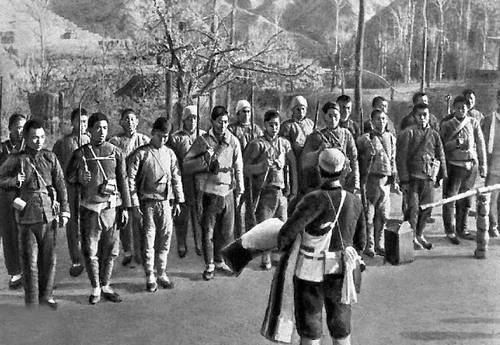
What the Chinese army is today, what it is, how it’s characterized and what are the prospects for further defense construction of our great neighboring state, readers of the Asian Library will learn from this article, based on the materials of the Institute of the Far East of the Russian Academy of Sciences, the Russian and foreign press.
According to the PRC Law on State Defense adopted in March 1997, the PLA and reserve troops, along with the armed forces of the people's armed forces (NWP) and the people's militia, constitute the "triune system" of the Chinese armed forces.
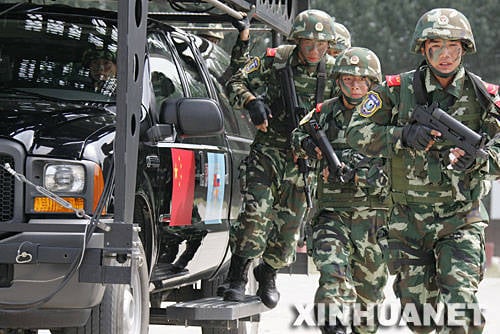
Today, the People’s Liberation Army of China has been significantly reduced and has about 2,8 million. It includes all the components of a modern army, including air force, naval forces, and other troops that are armed not only with conventional weapons, but also intercontinental missiles and modern nuclear weapons.
Strategic nuclear forces include ground, air, and naval components and total 167 nuclear weapons carriers. They are based on strategic missile forces, which are armed with 75 ground-based ballistic missile launchers. Strategic aviation has 80 airplanes "Hun-6" (created on the basis of the Tu-16). The naval component includes an atomic missile submarine with 12 rocket launchers of the Julian-1 missiles.
"Hun-6" (created on the basis of the Tu-16)
The ground forces number 2,2 million troops and consist of 89 combined-arms divisions of the field forces (including 3 "rapid reaction" divisions and 11 tank), most of which are consolidated into 24 combined arms armies.
The air force has about 4 thous. Combat aircraft, mostly of obsolete types, and are intended primarily for air defense tasks and, to a lesser extent, to support ground forces. Their composition is dominated by fighter aircraft, which accounts for about 75% of the aircraft fleet.
fighters J-10
In the naval forces - around 100 large warships, and 600 combat aircraft and naval aviation helicopters. To protect the coast, there are about 900 patrol ships capable of operating only in the coastal zone. The Chinese Navy does not yet have aircraft-carrying cruisers. For submarine operations, there are about 50 Kilo class diesel submarines.
In 90's The combat structure of the PLA has not undergone significant changes, which is explained by the attention of the country's leadership primarily to the problems of restructuring the research complex and the defense industry. At the same time, the number of military equipment in the army and navy was slightly reduced due to the removal of the most obsolete models from service.
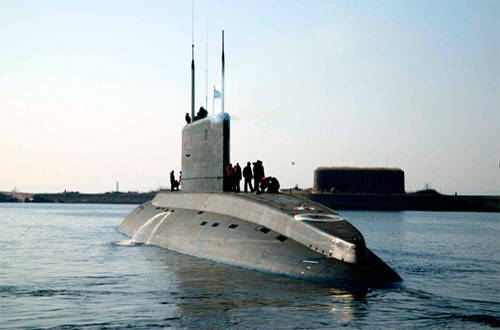
The number of PLA reserve is estimated by Western researchers at 1,2 million. However, in the event of a threat to the PRC, it can easily be increased, since more than 600 thousand troops annually leave the army, and the number of the most prepared part of the reserve (persons dismissed in the last five years) may be about 3 million.
Modernization of the PLA at the current stage is carried out at a slower pace and is selective. The greatest efforts are being made to modernize strategic nuclear forces by replacing outdated liquid rockets with more advanced solid fuel Dunfeng-41 and Juylan-2.
Recently, another direction has been developed - the creation of PLA mobile forces on the basis of existing units, designed to act in local conflicts along the perimeter of the state border, as well as to support the people's armed police in ensuring internal security and public order. The number of this developing component is about 250 thousand people (9% of ground forces), in the near future it is expected to include in its composition of strike aircraft and part of the fleet. By 2010, mobile forces may include up to one-third of the PLA (about 800 thousand people).
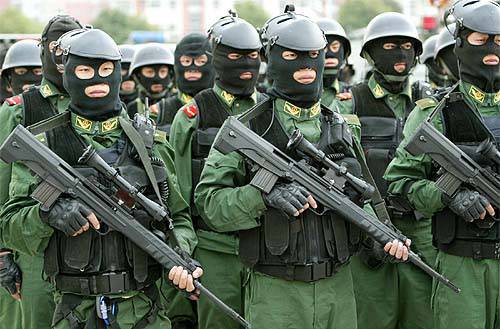
Along with the development of new types of conventional weapons, in particular the main battle tank of the 90-11 type and the Jian-10 multipurpose fighter (Р-10), steps are being taken to overcome China’s lagging behind the militarily developed countries in the field of high-precision weapons. The Chinese military leadership believes that this type of weapon has recently been actively proving its effectiveness. The widespread use of precision weapons during the recent NATO aggression in the Balkans, despite a number of blunders (or specially planned actions) that led to the tragedy at the Chinese Embassy in Yugoslavia, which resulted in the death of 3 Chinese citizens, testifies to its high combat effectiveness.
Main battle tank type 90-11
J-10 Fighter (Jian-10)
Americans cannot accept the fact that in the person of the People's Republic of China they acquire another powerful competitor in the field of creating high-precision weapons. In the year 1997, the report of the US Secretary of Defense on China’s military strategy expressed concern about the development of a Chinese cruise missile, which can be entered into service in the 2010 year. The US is also angry that in the foreseeable future, China may cease to be one of the potential US nuclear targets, since in 1996, Beijing began developing its own missile defense system, which is also scheduled to be completed in the 2005-2010 design year.
According to Chinese experts, the technical equipment of China’s defense industry lags behind the advanced level by more than 15 years. In order to quickly overcome this gap and solve the problems of defense modernization, the PRC leadership proceeded to the resumption of military-technical cooperation with Russia. Today it is carried out on a long-term contractual basis in the context of developing relations of equal trust partnership between the two countries and covers such areas as military science, high technology (including dual-use), space, communications. China received the possibility of purchasing Russian military equipment, training military-technical specialists in Russia, and implementing joint projects to develop, modernize and repair weapons. Such steps by China undoubtedly contribute to solving the most pressing problems of PLA modernization.
In recent years, China has purchased large quantities of military equipment from Russia; a license was acquired for the production of Russian Su-27 fighters (without the right to export to third countries), and an agreement was signed on repairing Chinese diesel submarines at Russian enterprises.
An analysis of Chinese doctrinal views and trends in defense construction in the current decade shows that China intends to continue the modernization of the military-industrial complex and the armed forces, considering these measures as a guarantee of external and internal security and a necessary condition for successful economic and social development of the country.
The main trends in the field of defense construction of the PRC
The main trends in the field of defense construction of the PRC are formed under the influence of new moments in doctrinal views that have replaced the previous concept of preparing the country for a global war. Chief among them is the thesis that a new world war is hardly possible in the foreseeable future, since today there are opportunities to ensure a peaceful international situation for a relatively long period. At the same time, according to Chinese estimates, stereotypes of the Cold War period and politics from a position of strength are not eliminated from the practice of international relations, as evidenced by the humanitarian catastrophe in the Balkans that broke out in April-June 1999 due to the US and NATO. The roles of countries and the balance of power in world politics do not have a permanent configuration and, under certain conditions, can change in a direction unfavorable for China. Therefore, at the turn of the century, the country's leadership considers it important to turn China into a state with powerful armed forces that can effectively protect the country from external threats. This is largely due to the experience of relations with the West in the last century, when China, with its high culture, but weak militarily, subjected to intrigues and blatant looting from Western countries, experienced national humiliation and became semi-colonially dependent on them.
In this regard, as follows from official statements, in particular from the White Paper on National Defense, recently published by the State Council of the PRC, the main content of the PRC’s policy in the field of military construction is strengthening defense, resisting aggression and armed subversion, ensuring state sovereignty, territorial integrity and security of the country. It is emphasized that the PRC cannot be a source of aggression and will never use nuclear weapons first and under no circumstances.
At the turn of the century, the prevailing trend in the military construction of the PRC is the improvement of the qualitative parameters of the defense potential, while reducing the number of the PLA. The country's leadership is making a demand to strengthen the army at the expense of science and technology, to strengthen research on defense significance, to create and improve the defense industry mechanism that meets the conditions of a market economy, and gradually upgrade weapons and equipment.
The armed forces are given the task of increasing the possibilities of conducting combat operations in case of sudden changes in the situation in the conditions of using modern technology, including high technology.
One of the important trends in the defense construction of the PRC is a further reduction in the number of PLA. In addition to the reduction of 1 million, announced in 1985, China in 1997 announced its intention to implement a new reduction of this component by 2001 thousand people - from 500 million to 3 million. Ground forces (by 2,5%) and, to a lesser extent, air and naval forces (by 19% and 11,6%, respectively) are subject to reduction. It is important to emphasize that this process is accompanied by measures to strengthen the People’s Armed Police, whose number by 11 is planned to increase from 2000 million to 1 million people.
China’s nuclear strategy, which pledged not to be the first to use nuclear weapons, is reflected in the concept of “limited nuclear retaliation”. It involves the construction of nuclear deterrent forces capable of creating the threat of causing unacceptable damage to force a potential adversary to abandon the use of nuclear weapons against China. Such an approach does not focus on achieving nuclear parity with developed countries and is therefore rational from the point of view of saving material and financial resources.
Formation of views on the construction of general-purpose forces is based on the analysis of major armed conflicts that took place in the current decade. The evolution of views in this area has led to the adoption of the concepts of "quick response" and "limited war in terms of the use of high technologies", involving the creation of relatively compact armed forces equipped with modern equipment and weapons and capable of immediately performing combat missions in local conflicts. Accordingly, the PLA mobile forces developed in the Chinese armed forces and placed special emphasis on the development of various military electronic systems, including early warning and warning systems, communications, command and control, and electronic warfare systems.
According to Chinese statistics, China’s defense expenditure in 2000 amounted to about 10 billion dollars and is one of the lowest in the world. Their share in the gross national product of the People's Republic of China does not exceed 1,5% (1995 g.) And tends to decrease: in 1999, this figure was 1,1%.
However, skeptics believe that official data reflect only the expenditures of the Ministry of Defense and do not take into account allocations for military needs provided for in the budgets of other departments and agencies. In addition, some Western scientists believe that part of the cost of maintaining military garrisons, local troops and reserves is financed from the provincial budgets, and not from the central budget. With this in mind, China’s real military spending is estimated by them to be higher than the official. For example, the Japanese claim that real defense spending in the PRC in 199 amounted to about 30 billion dollars.
Anyway, it is quite obvious that, taking into account the objective need to modernize the defense complex, the foundations of which were formed in 50-60, the huge population of the country (more than 1,2 billion people), the vast territory of the territory and the length of land and sea borders , the military expenditures of the PRC do not exceed the level corresponding to the principle of defense sufficiency. For comparison, in 2000, Japan’s military spending was about 48; Great Britain - 38; Germany - 40; France - 47; US - 290 billion. That's who needs to take care of reducing their militarist appetites!
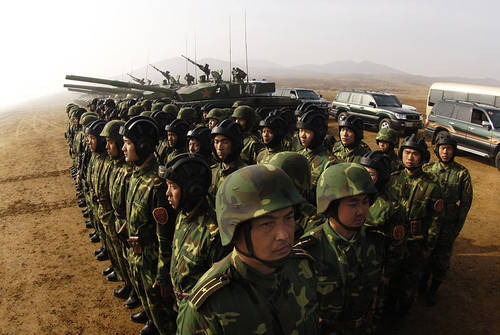
The construction of the Chinese army in the twenty-first century is likely to be influenced by a number of external and internal factors that generally have a deterrent effect on the financing of military spending.
External factors are characterized by the normalization of China’s relations with neighboring countries and major powers of the world. A special place among them is occupied by the dynamically developing Russian-Chinese relations of equal partnership aimed at strategic interaction in the 21st century. The increasing integration of China into the world economy as one of the necessary conditions for successful economic construction in this country is acquiring major importance here.
From internal factors, one should single out the priority attention of the PRC leadership to ensuring internal political stability in the state and solving complex socio-economic problems in the context of a shortage of natural resources and certain demographic and environmental tensions.
Significant successes of China in the economic, political, social and other areas, in addition to the obvious dividends, brought him an unforeseen threat, namely, raised in the world, and in our country, the fears associated with, allegedly, China's departure from the commitment to peace and good neighborliness. Due to a misunderstanding or deliberate distortion of the military intentions of the PRC, a thesis about the “Chinese threat” appeared, periodically inflated both in the Western and Russian media.
China deeply regrets that publications appear abroad showing the misunderstanding of Chinese foreign policy and defense construction. Their essence comes down to the following charges:
1) after the reduction of Russian and American troops in the Asia-Pacific region (APR), China is trying to fill the vacuum of power;
2) China is going to become a military and economic superpower in the region;
3), with its purchases of modern weapons of China from Russia, China is responsible for the arms race in the region;
4) China is just waiting to pump its military muscles as quickly as possible and hit the neighboring countries, and even the United States.
Chinese experts refute these allegations, citing data on the number of weapons (including nuclear) of Russia and the United States in the region. In their opinion, they exceed the weapons of China. Chinese scientists say that although Russia and the United States have reduced weapons, these countries still have the strongest armies in the Asia-Pacific region, and therefore there is no “power vacuum,” since the United States and Russia have not left it.
Disproving another accusation, the leaders and scientists of the PRC argue that China does not intend to seek hegemony and political dictate in the world, and even becoming a sufficiently strong state, it will not strive for this.
Regarding the following accusation, Chinese experts believe that military modernization, meeting the needs of modern defense, is a huge problem for China, since the current state and level of the PLA is in many respects inferior to the armies of neighboring powers. In their opinion, China’s military spending is less than defense spending even for a country like South Korea and an economic entity like Taiwan.
There is a fair amount of truth in these judgments. The second half of 80's and 90's are characterized by the fact that internal threats are much more likely to bother China and sometimes more dangerous than external ones. For years, 20, China has focused within itself, carrying out vital reforms. For the Chinese leadership, top-priority problems are internal, which interfere with the normal functioning of the state and pose serious threats to its existence. Social, economic, political, environmental problems carry a huge potential for creating serious crisis situations, which makes the security and stability of the country vulnerable.
Consequently, to create additional external problems for oneself means to be distracted from internal ones, and this would contradict the logic of Chinese reforms.
The above gives reason to believe that at the beginning of the twenty-first century, the Chinese army will not attack either Russia or another country. It is also highly doubtful that the PLA will someday forcefully invade its Taiwanese province, despite statements by the PRC leadership of the end of the last century that they do not rule out violent actions against Taiwan if its leadership (by the way, gone from the political scene after the recent political elections on the island) will by their provocations disrupt the process of unification of the Chinese nation.
It simply does not make sense for China to carry out armed aggression against Taiwan, since the latter is de facto already passing into the bosom of mainland China. Taiwanese investments in the mainland now amount to tens of billions of dollars a year, and the business of leading Taiwanese corporations in the PRC is expanding at a cruising speed and acquiring gigantic proportions. Does it make sense to chop a hen that itself sits in a nest in order to lay golden eggs?
All the activities of the PLA are determined today, based on the principle of defense sufficiency. And those “specialists” who, drawing from China and his army a bloody monster, are trying to intimidate people and prevent the inevitable strengthening of Russian-Chinese cooperation, I would like to remind you of a good Russian saying: “Thief louder than others:“ Hold the thief ””!
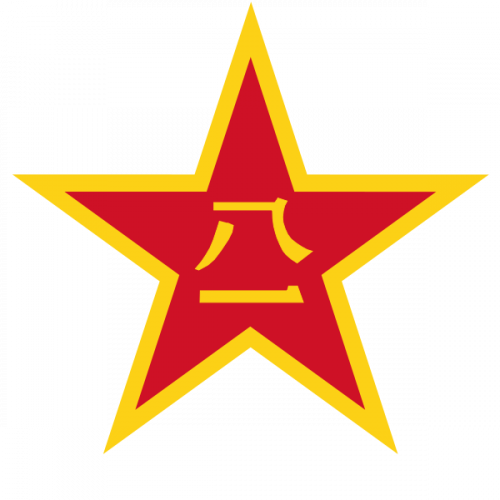
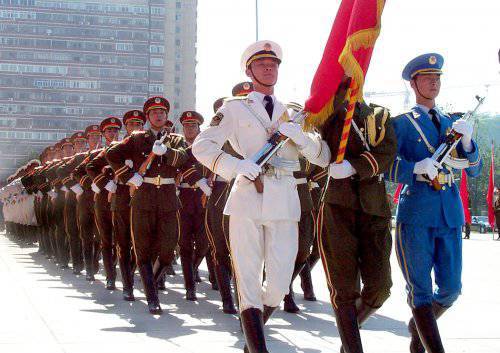
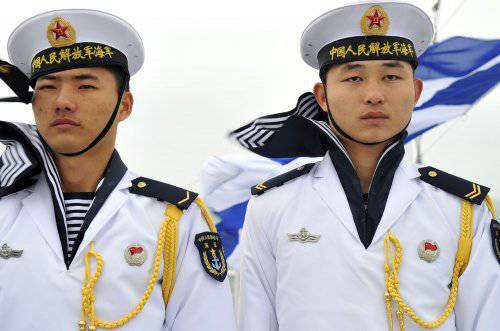
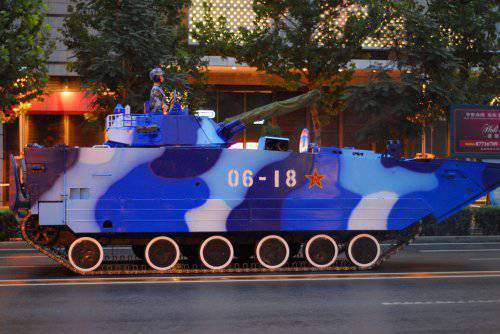
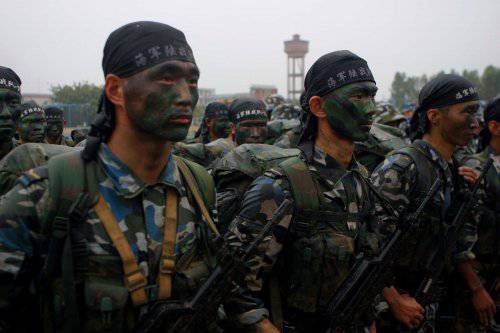
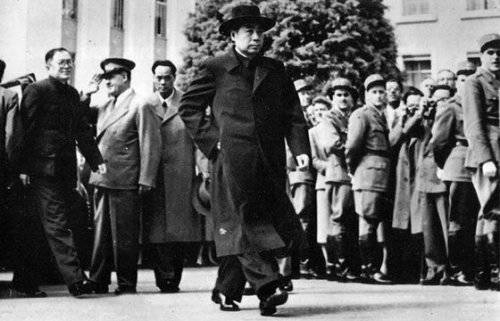
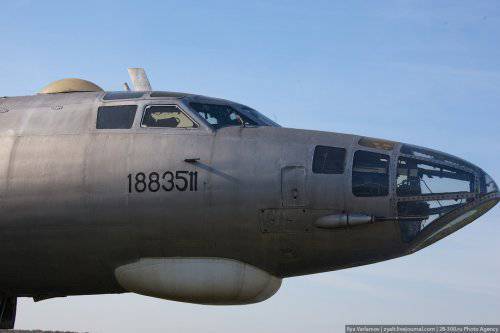
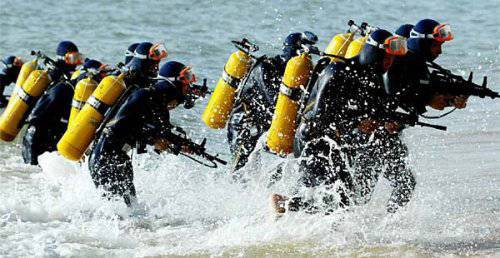
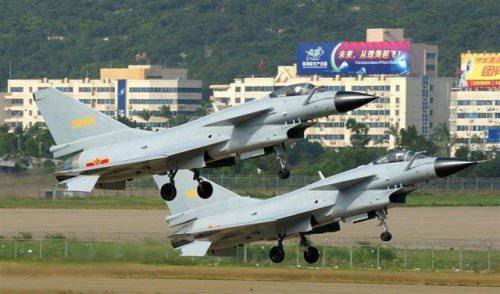
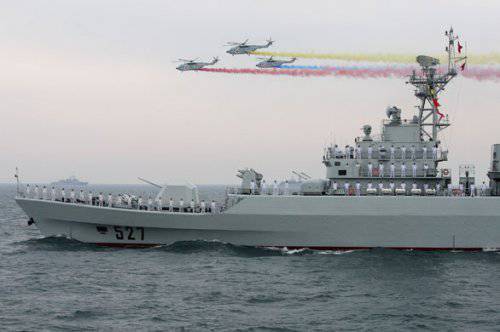
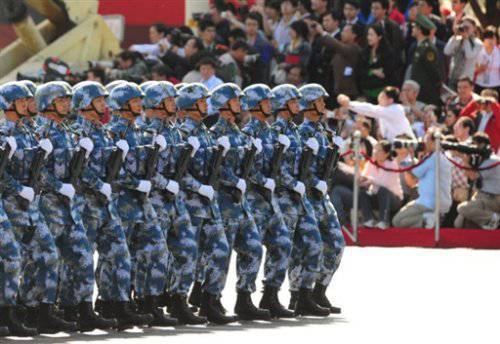
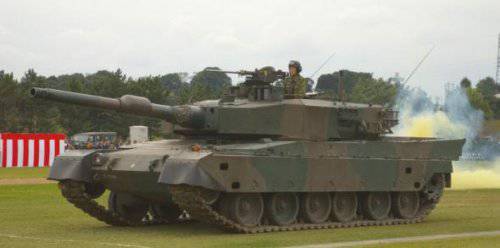
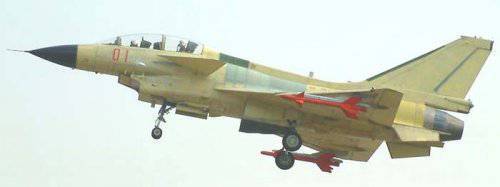
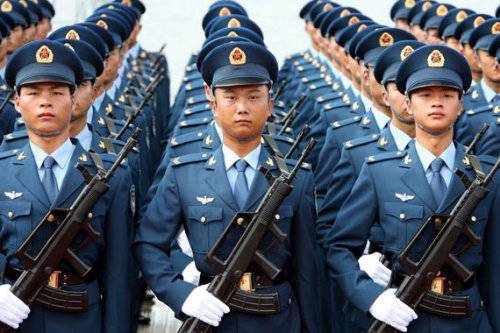
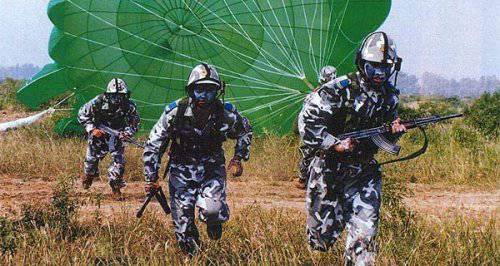
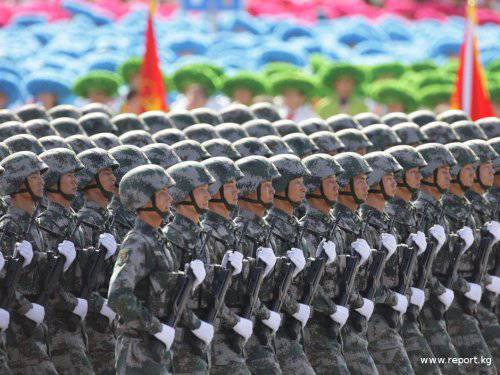
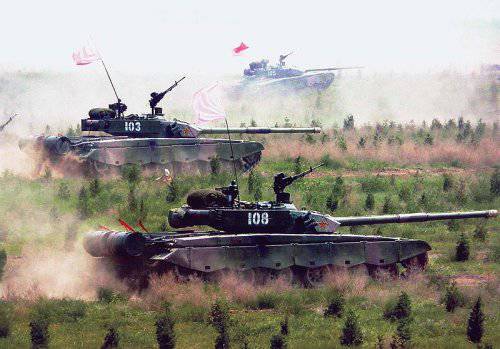
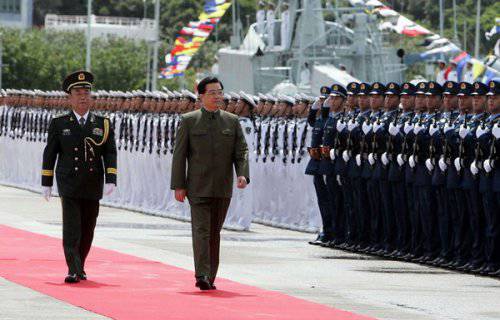
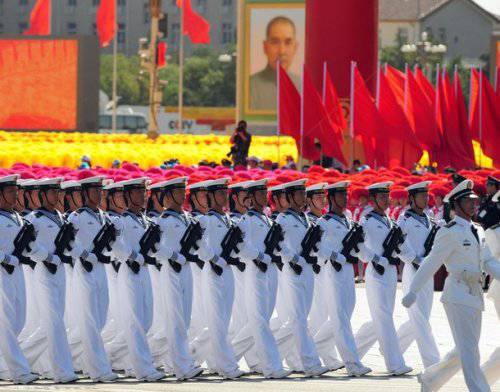
Information